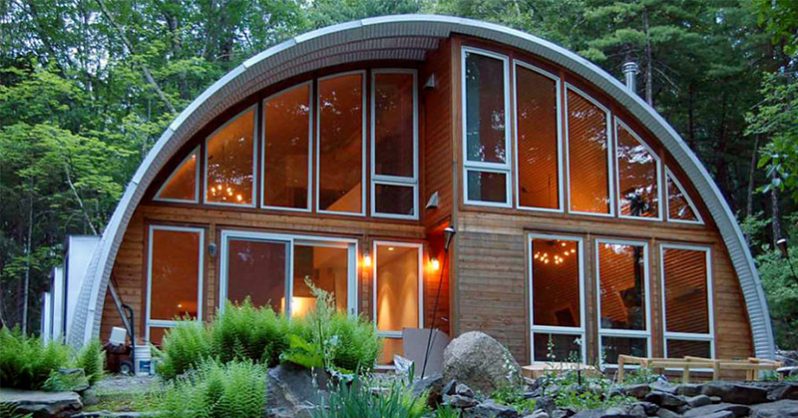
Quonset hut [kwon-sit] Examples Trademark.
- a semicylindrical metal shelter having end walls, usually serving as a barracks, storage shed, or the like, developed for the U.S. military forces from the British Nissen hut at Quonset Naval Base in Rhode Island.
Examples from the Web for quonset Contemporary Examples of quonset
Heathrow was just a collection of Quonset huts, and the airfield was enrobed in fog.
The New Fear of Flying After MH370
Clive Irving
March 31, 2014
Historical Examples of quonset
We lived in quonset huts there, and he lived in a different hut than I did.
Warren Commission (11 of 26): Hearings Vol. XI (of 15)
The President’s Commission on the Assassination of President Kennedy
And that the other members of his quonset hut said he was at fault.
Warren Commission (8 of 26): Hearings Vol. VIII (of 15)
The President’s Commission on the Assassination of President Kennedy
They were divided into two rooms with a bath room each side, each half of the quonset hut.
Warren Commission (8 of 26): Hearings Vol. VIII (of 15)
The President’s Commission on the Assassination of President Kennedy
No, sir; we had them in the armory, in the quonset hut designated as the armory.
Warren Commission (8 of 26): Hearings Vol. VIII (of 15)
The President’s Commission on the Assassination of President Kennedy
Do you remember an occasion on which he was transferred out of a quonset hut because of a refusal to clean up?
Warren Commission (8 of 26): Hearings Vol. VIII (of 15)
The President’s Commission on the Assassination of President Kennedy
British Dictionary definitions for quonset Quonset hut noun
- trademark US a military shelter made of corrugated steel sheet, having a semicircular cross sectionBrit equivalent: Nissen hut
Word Origin and History for quonset Quonset hut
1942, from Quonset Point Naval Air Station, Rhode Island, where this type of structure was first built, 1941. The place name is from a southern New England Algonquian language and perhaps means “small, long place.”
 Liberal Dictionary English Dictionary
Liberal Dictionary English Dictionary